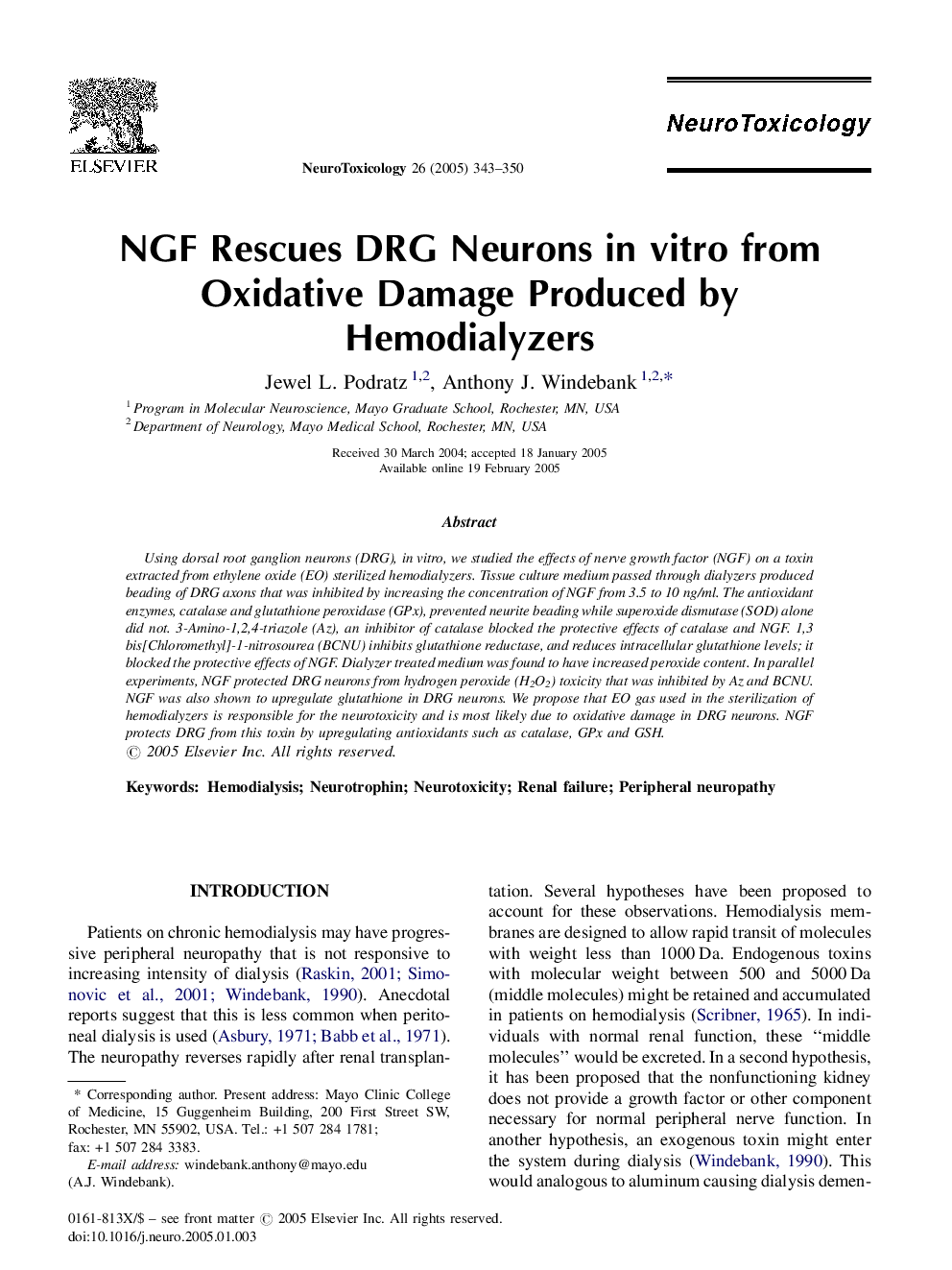| Article ID | Journal | Published Year | Pages | File Type |
|---|---|---|---|---|
| 9032176 | NeuroToxicology | 2005 | 8 Pages |
Abstract
Using dorsal root ganglion neurons (DRG), in vitro, we studied the effects of nerve growth factor (NGF) on a toxin extracted from ethylene oxide (EO) sterilized hemodialyzers. Tissue culture medium passed through dialyzers produced beading of DRG axons that was inhibited by increasing the concentration of NGF from 3.5 to 10Â ng/ml. The antioxidant enzymes, catalase and glutathione peroxidase (GPx), prevented neurite beading while superoxide dismutase (SOD) alone did not. 3-Amino-1,2,4-triazole (Az), an inhibitor of catalase blocked the protective effects of catalase and NGF. 1,3 bis[Chloromethyl]-1-nitrosourea (BCNU) inhibits glutathione reductase, and reduces intracellular glutathione levels; it blocked the protective effects of NGF. Dialyzer treated medium was found to have increased peroxide content. In parallel experiments, NGF protected DRG neurons from hydrogen peroxide (H2O2) toxicity that was inhibited by Az and BCNU. NGF was also shown to upregulate glutathione in DRG neurons. We propose that EO gas used in the sterilization of hemodialyzers is responsible for the neurotoxicity and is most likely due to oxidative damage in DRG neurons. NGF protects DRG from this toxin by upregulating antioxidants such as catalase, GPx and GSH.
Related Topics
Life Sciences
Environmental Science
Health, Toxicology and Mutagenesis
Authors
Jewel L. Podratz, Anthony J. Windebank,
